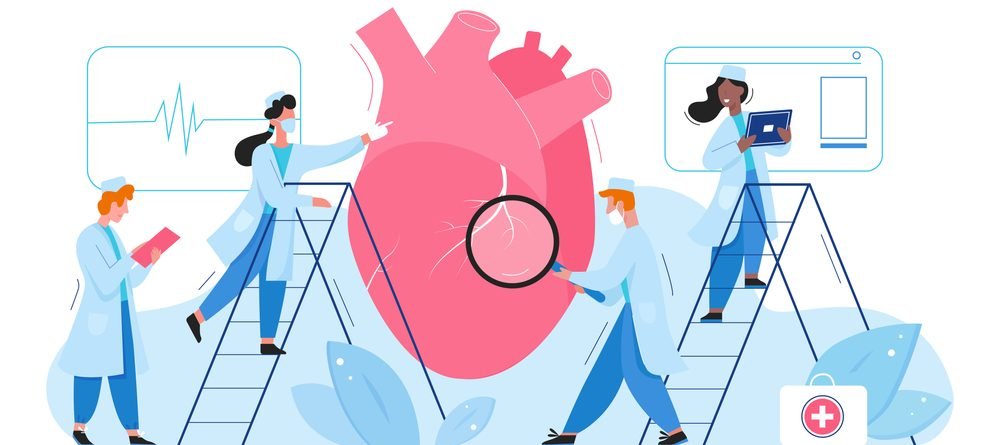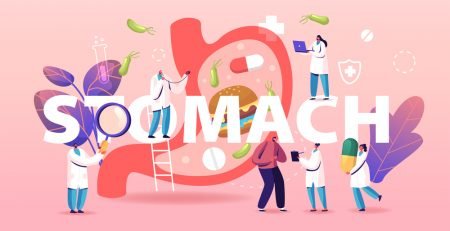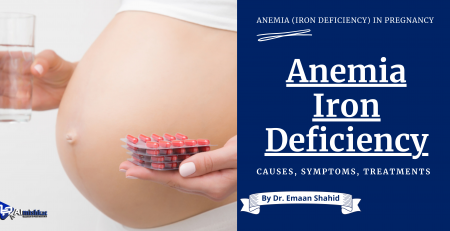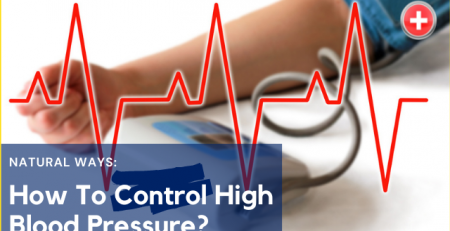Heart Diseases: What are Its Symptoms, Causes & More
The term “heart disease” means a few sorts of heart conditions. Heart diseases are the primary source of death in many countries including Pakistan.
What is Heart Disease?
The most well-known heart illness is coronary vein infection (CAD), which can prompt cardiovascular or heart failure. Any heart patient can extraordinarily lessen their certainty of heart illness through way of life changes and, sometimes, medication for sure. There are many heart diseases and heart diseases symptoms discussed below. [1]

Overview of Congenital Heart Disease (CHD)
Congenital heart diseases (CHD) comprise imperfections of the cardiovascular design, which obstruct the veins septation of the heart fragments and their arrangements and ordinary capacity of the valve contractions. In the normal heart, the portions are arranged in such a manner to permit deoxygenated venous blood to go to the lungs through the pneumonic conduit and the oxygenated venous blood to go to the foundational organs through the aorta without blending.
Short and incredible courses are in the grouping, with no correspondence. Laying out the set of cardiovascular fragments is essential for arranging a careful fix. We propose a pathophysiological order of CHD given the clinical outcome of primary deformities on the physiology of blood flow. We partitioned cardiovascular inconsistencies in:
Expanded pneumonic bloodstream (septal deformities without aspiratory deterrent and with left-to-right shunt);
- Pneumonic stream.
- An imperfect blood movement.
- CHD quiet until grown-up age.
Cardiomyopathy and Its types
Cardiomyopathy is a heart muscle disease that makes it harder for your heart to transfer blood to the remainder of your body. Cardiomyopathy can prompt heart disease. Treatment – which could incorporate drugs, heart medical procedure, or, in extreme cases, a heart relocation – relies upon which sort of cardiomyopathy you have and how genuine it is.
Dilated cardiomyopathy
Dilated cardiomyopathy is a sickness of the heart muscle that typically begins in your heart’s chamber (left ventricle). The ventricle extends and (enlarges) and can’t pump blood as a sound heart can. Over the long run, the two ventricles might be impacted. The expression “cardiomyopathy” alludes to diseases that influence the heart muscle.

Dilated cardiomyopathy probably won’t cause side effects, yet it tends to be life-undermine for specific individuals. It’s not a surprising reason for heart disease. Dilated cardiomyopathy can likewise prompt unpredictable heartbeats (arrhythmias), blood clusters, or unexpected passing.
Hypertrophic cardiomyopathy (HCM)
Hypertrophic cardiomyopathy (HCM) is a sickness wherein the heart muscle turns out to be strangely thick (hypertrophied). The thickened heart muscle can make it harder for the heart to pump blood.
Hypertrophic cardiomyopathy frequently goes undiscovered because many individuals with the infection have barely any side effects and can have typical existences with no huge issues. In a few individuals with HCM, the thickened heart muscle can cause windedness, chest congestion, or problems in the heart’s electrical framework, bringing about hazardous unusual heart rhythms (arrhythmias) or unexpected passing.
Heart arrhythmia
A heart arrhythmia is an irregular heartbeat. Heart rhythm problems (heart arrhythmias) occur when the electrical signals that coordinate the heart’s beats don’t work correctly. The faulty signaling causes the heart to beat too fast (tachycardia), slow (bradycardia), or irregularly.
Heart arrhythmias may feel like a fluttering heart and may be harmless. However, some heart arrhythmias may cause bothersome — sometimes even life-threatening — signs and symptoms.
However, sometimes it’s normal for a person to have a fast or slow heart rate. For example, the heart rate may increase with exercise or slow down during sleep.
Heart arrhythmia treatment may include medications, procedures, or surgery to control or eliminate fast, slow or irregular heartbeats. A heart-healthy lifestyle can help prevent heart damage that can trigger certain heart arrhythmias.
Symptoms of Heart Diseases
In some cases, heart illness might be “quiet” and not analyzed until an individual encounters signs or side effects of heart failure, cardiovascular breakdown, or arrhythmia. At the point when these occasions occur, side effects might incorporate.
The development of fatty plaques in your arteries (atherosclerosis) can harm your veins and heart. Plaque development leads to the cause of blocked veins that can prompt respiratory failure or stroke.
Heart sickness side effects might be different for people. For example, men are bound to have chest pain, and ladies have other signs and side effects alongside chest congestion.
Signs and side effects can include:
- Chest congestion.
- Briskness in your legs or arms, assuming that the veins in those pieces of your body are restricted.
You probably won’t be determined to have heart failure sickness until you have a heart attack, angina, stroke, or cardiovascular breakdown. It’s essential to look for cardiovascular side effects and examine worries with your primary care physician. Congenital heart disease can now and again be seen as right on time with regular assessments.

What is Heart Failure?
The word cardiac or heart failure makes it sound like the heart is not working correctly, and in reality, cardiovascular breakdown means that the heart isn’t pumping blood properly as it must be. Congestive heart failure is a kind of cardiovascular breakdown that requires looking for ideal clinical consideration, as in some cases, the two terms are utilized reciprocally.[2]
Types of Heart failure
Left-sided heart failure
It is characterized as the most common type of heart sickness due to ventricular fibrillation. Inefficient pumping of blood leads to the cause. As a result, your body doesn’t get enough oxygen supply, leading to the cause of oxygen deficiency. Fluid build-up and shortness of breath.
Diastolic heart failure
It is a stiffness of the heart muscle. Usually, a type of heart attack occurs when your muscle doesn’t get filled with blood. Lack of blood flow to the organs.
Systolic heart failure
A heart muscle loses its ability to contract. The contractions are necessary to pump blood containing oxygen to the body organs. You can feel pain on both the right and left sides of the heart.
Causes of Heart Failure
Coronary heart illness (CHD) is typically brought about by the development of greasy stores (atheroma) on the walls of the arteries around the heart (coronary veins).
The development makes the arteries smaller, limiting the progression of blood to the heart muscle. This interaction is called atherosclerosis.
Your certainty of creating atherosclerosis is altogether expanded if you:
- Smoke.
- Have (hypertension).
- Have elevated cholesterol.
- Have elevated degrees of lipoprotein (a).
- Try not to work-out routinely.
- Have diabetes.
Treatment of Heart Diseases
Different drugs can treat a heart disease. There are drugs that lower LDL cholesterol, diminishing plaque development in the valves. A few medications slim the blood, bringing down the blood level, particularly in the coronary arteries. Others lower and slow the pulse, lessening the interest for oxygen and freeing some from the strain on the heart.
View Heart Medications.
Like valve infection, heartbreak’s downside effects may not be connected with how powerless your heart is. You might have numerous side effects. However, your heart capacity might be temporarily getting better, Or then again, you might have a seriously harmed heart with few or no side effects.
Frequently Asked Questions (FAQs)
What are The Most Common Heart Diseases?
Coronary artery disease, arrhythmia, heart valve disease, and heart failure are the four most common types of heart disease.
How do I Know If My Heart is Healthy?
You should feel a tapping or pulse against your fingers, and that is your heartbeat. Look at your watch and count the number of taps you feel in 10 seconds. Multiply that number by 6 to determine your heart rate for 1 minute. A regular pulse is 60 to 100 beats per minute. If you observe such results, then you have a perfectly healthy heart.
Conclusion
An overview of heart diseases will hopefully help you to control them. Many individuals with heart muscle infection, or cardiomyopathy, have no side effects or just minor side effects and carry on with a typical life. Others foster side effects, which progress and deteriorate as heart work declines.
References:
[1] Heart Disease: Symptoms & Types – WebMD
[2] Types of Heart Failure | American Heart Association












LEAVE A COMMENT
You must be logged in to post a comment.